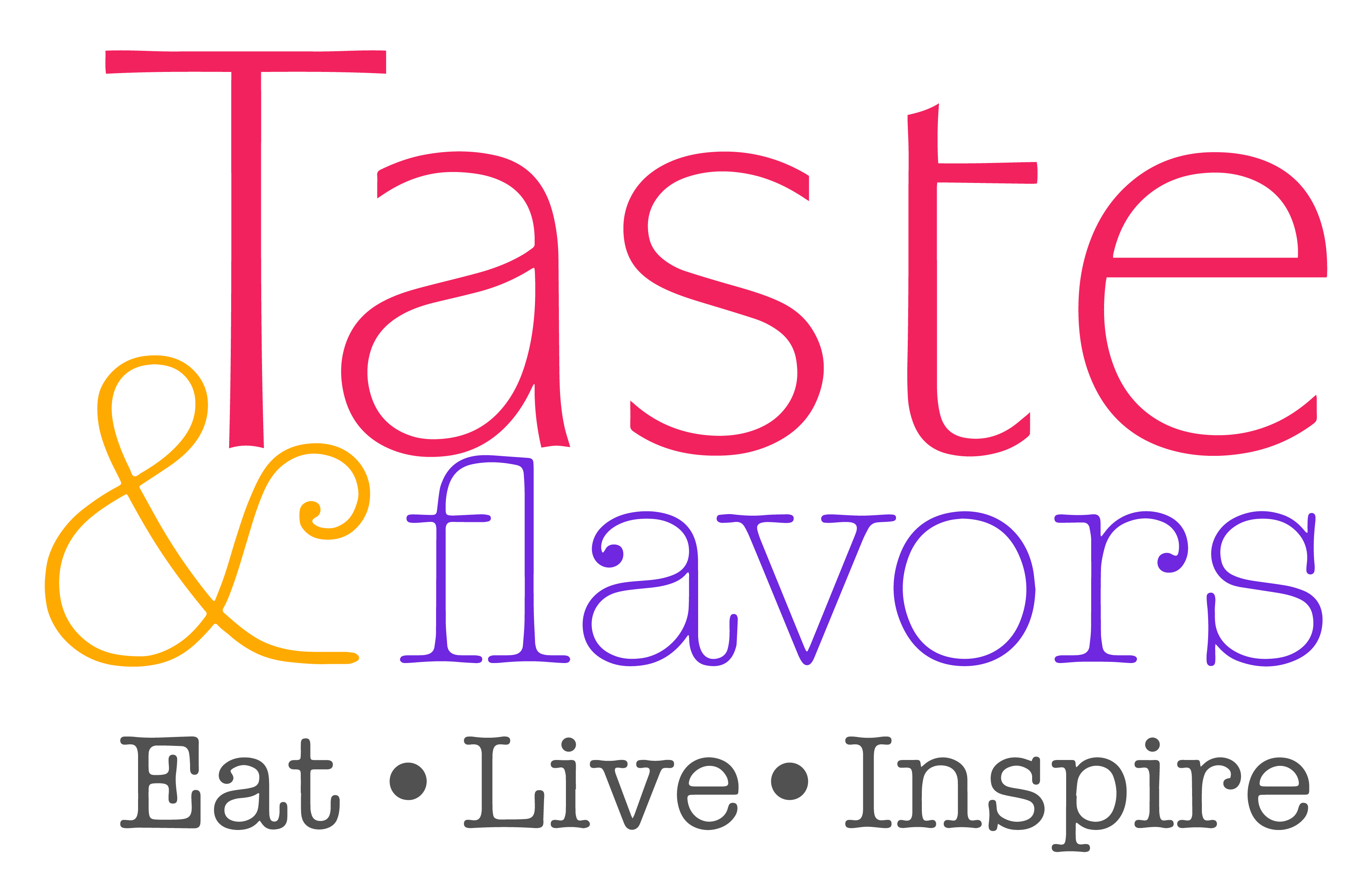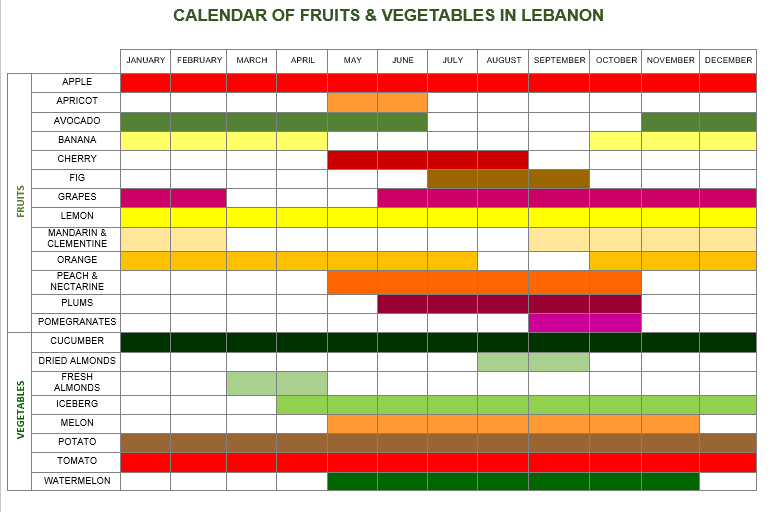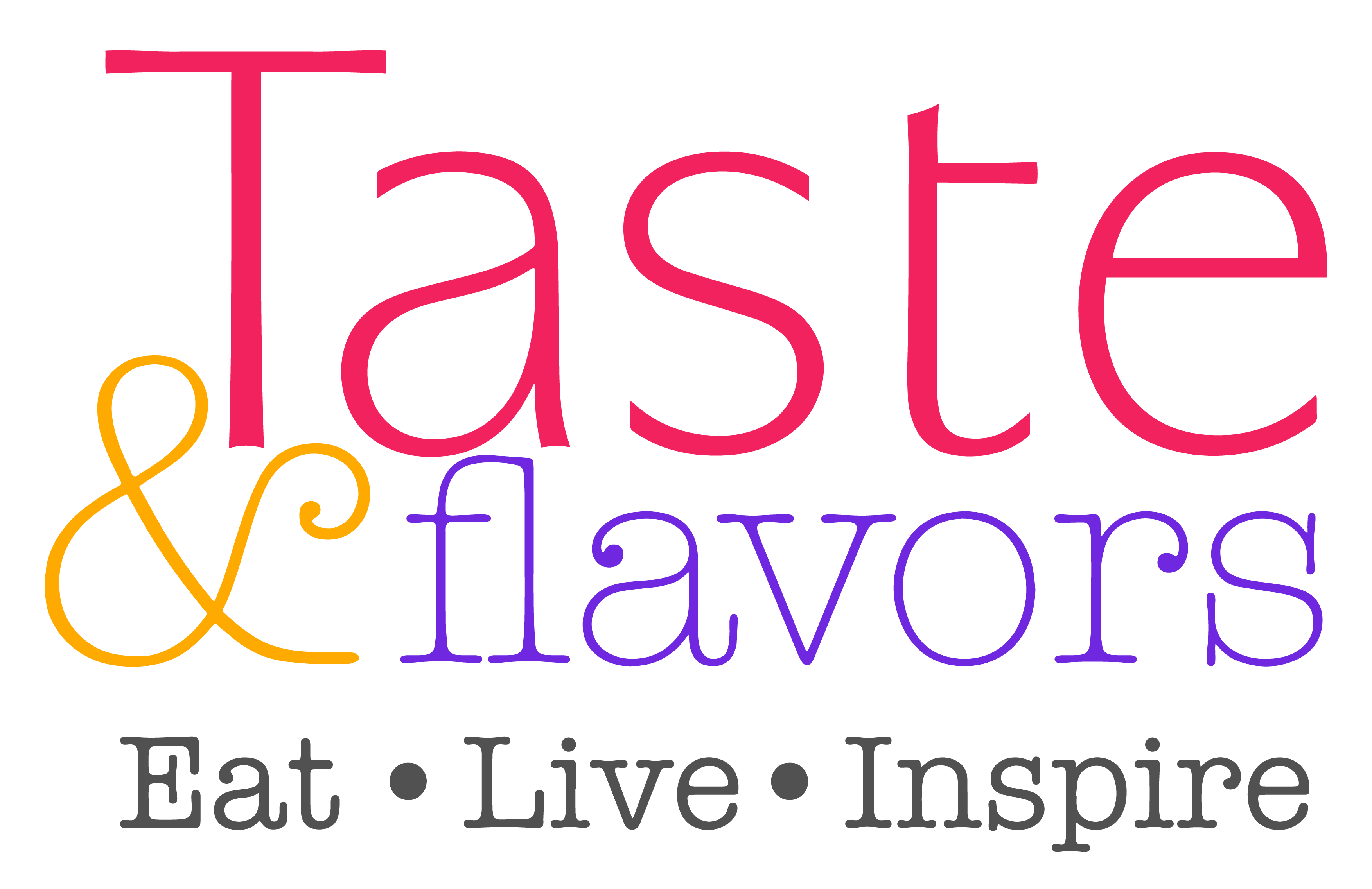YOUR GUIDE TO SEASONAL FRUITS AND VEGETABLES IN LEBANON
TO BRING THE SEASON’S FRESHEST FLAVORS TO YOUR TABLE
BY NADIM ABOU SAMRA
LEBANESE MINISTRY OF AGRICULTURE
Cooking with fruits and vegetables that are in season has its perks. Although you can acquire most produce any time of the year, in-season produce is at its freshest, meaning it’ll taste its finest. Plan to purchase your fruits and vegetables during their peak seasons, and you’ll not only enjoy them more (it tastes better), you’ll save money while maximizing nutrition.
Lebanon is characterized by the diversity of its crop production. Benefiting from a Mediterranean climate, most fruits and vegetables are produced in the country. The mountainous topography and the inner fertile Bekaa valley enable not only a higher diversity of the products, but also a wide range of maturity date increasing the availability of the product on the market.
Due to Lebanon’s geographical position, several crops are cultivated at their geographical and altitudinal limits, giving them a special quality in terms of flavor, sugar content, fruit texture, storage capacity and color.
FRUITS |
- APPLE
Apple is the most prominent fruit product of Lebanon, main species: Red delicious, Golden, Granny Smith, Gala, Early Gold. Apple is grown in the Lebanese mountains between 700 and 2000m altitude as well as in the Bekaa valley. Such environment gives the fruit a unique quality in terms of color, sugar content, and mostly its crunchy texture and storage quality. It is anti-cancerous, rich in many vitamins and anti-oxidant.
Apples are harvested from September till December but they are available all year long because they are refrigerated.
- APRICOT
Like all Mediterranean regions, Lebanon produces apricot, with distinguished local varieties mentioned above. The northern Bekaa is the most important area of production. The fruit is also produced on the western slopes of Mount Lebanon. Main Species: Aajami, Dahabi, Sendyani, Bayadi and Um Hussein.
- BANANA
Banana has been introduced as a field crop on the coastal narrow plains in the middle of the last century. Soon the quality of the fruit gained
the trust of the local consumers and banana cultivation with its different varieties conquered the plains from the southern border to Byblos (Jbeil) which is considered its northern limit. Available all year long because it’s refrigerated.
- CHERRY
Lebanon is considered one of the major producers of sweet cherry in the Mediterranean region with local (Nouari, Feraauni, Benni, Mkahhal) and International varieties (Georgia, Ferrovia, Lapins, Noire de Meched, Sweetheart).
The country is doted by exceptional optimal conditions for cherry production. Cherry is produced with minimal chemical inputs. It is cultivated between 900 and 2000m altitude, giving it a distinguished flavor, color, texture and considered as an organic fruit.
- FIG
Fig, the sweet summer fruit. Usually their Arabic names refer to their shape, color or taste like for instance “Aswad” means black, “Biyyadeh” means white, “Abou Enek” refers to the fruit with a long peduncle (tail), “Shtawi” refers to the late variety that ripens towards the end of summer, “Aassali” indicates the sweet honey taste of the fruit, “Shammouti” means elongated and “Bouaidi” means oval etc.
- GRAPES
Lebanon is in the center of the area of origin of grapes. Table grape is planted nationwide between the coastal area and 1600m altitude.
However the most important areas of production are the Bekaa valley and Akkar. The importance of its cultivation is due to the climatic conditions including a long period of sunny days over the year, fertile soil and adequate average of rainfall which ensure the appropriate Brix degree. Main Species: Baytamuni, Tfeifihi, Maghdushi, Jbaai, Globe seedless, Early Superior Seedless, Black Pearl and Red Globe.
- LEMON
Main Species: Eureka, Lisbon, Fiminello. Lemon is the most popular citrus in Lebanon since its juice is appreciated and used in most famous Lebanese dishes.
- MANDARIN & CLEMENTINE
From the old Yusuf effendi Mandarin, originally cultivated in Tripoli and its surrounding, to the most known Clementine varieties, these fruits are popular and produced all over the coastal plains from the south to the north.
- ORANGE
Main Species: Navels, Shamouti, Blood oranges and Valencia. Orange is the major citrus crop of Lebanon.
- PEACH & NECTARINE
Peach and nectarine have increased in importance since the nineties, as orchards were renovated and new varieties were introduced, including white and yellow pulp fruits from both peach and nectarine. Due to the difference in altitude between the different area of production, fruits are more available in the market with 4 main species: Peach yellow pulp, Peach white pulp, Nectarine yellow pulp, Nectarine white pulp.
- PLUMS
Lebanese Plums are recognized for their sugary taste and pronounced flavor. Some local varieties of plums are locally consumed acid, and harvested green before maturity. Main Species are Japanese plums (Abu Riha, Shiro, Black Amber, Mariposa, Santa Rosa, Friar, Angeleno) and European plums (Serhini, Bazenjani, Stanbouli, Reine Claude, President).
- POMEGRANATES
Pomegranates are planted in Lebanon, they grow on the coast. The fruit comes in sour and sweet varieties but both types have immense health benefit.
VEGETABLES |
- ALMOND
Almond is considered as one of the earliest domesticated tree, it is native to the Middle East and South Asia. Those fruits are widely cultivated in Lebanon and consumed as fresh green or dried food. Many varieties were introduced recently, they are known for their late blooming which makes them more resistant to the spring frost. Main Species are Awja, Halwani, Khachabi, Super nova, Ferragnès.
- AVOCADO
Avocado is a subtropical fruit, and Lebanon’s coastal has the ideal climate and produces six of the most important and delicious varieties of avocado: Fuerte (November till March), Hass (end of January till June), Lamb Hass (November till March), Pinkerton (January till March), Reed (March till June) and Ettinger (December till February)
- CUCUMBER
Lebanon is distinguished by the quality and originality of its local varieties of cucumber, namely the white or snake cucumber. Cucumbers, like tomatoes are produced off season in greenhouses on the coastal areas, and open field production is essentially in the Bekaa and mountain areas.
- POTATO
The different climatic zones in Lebanon ensure diversity in harvesting periods with Spunta and Agria as main species . Akkar and Bekaa plains constitute the major areas of production.
- TOMATO
Tomato is the most produced vegetable crop in Lebanon. The bulk of the production comes from the Bekaa valley. The coastal area produces off-season under greenhouses, whereas mountain areas are famous for their local Jabaliyeh variety, distinguished by its pink color and outstanding caliber.
- LETTUCE: ICEBERG
Iceberg cultivation is becoming more and more popular in Lebanon since demand increased for both exports and local consumption. The soil fertility, the sunshine over the year and calcareous water constitute the favorable conditions for growing a very good quality vegetable. Lebanese Iceberg is known for its sweet taste, its crunchy texture and its attractive color and shape. Iceberg is cultivated in the Bekaa valley with an adoption of drip irrigation system.
- MELON & WATERMELON
These sweet cucurbits are produced in different regions, with bulk of production in the Bekaa and the South. Due to difference in altitudes, and microclimatic conditions, flavor and sweetness of the fruits is outstanding.








